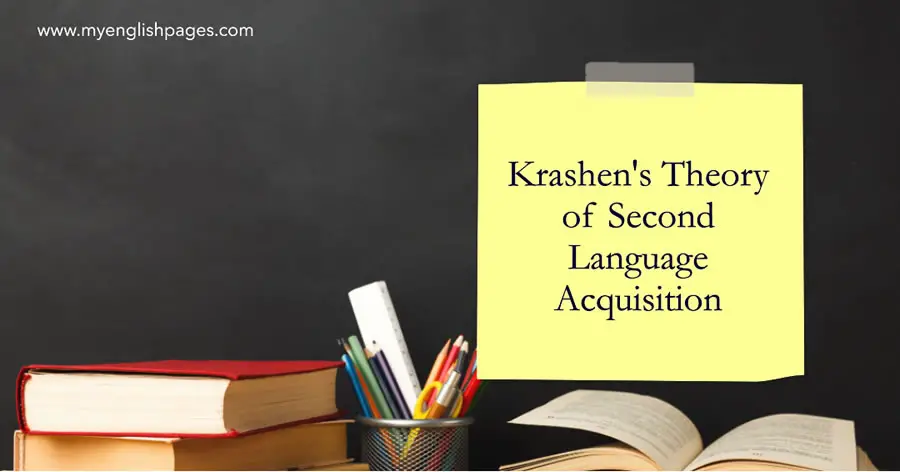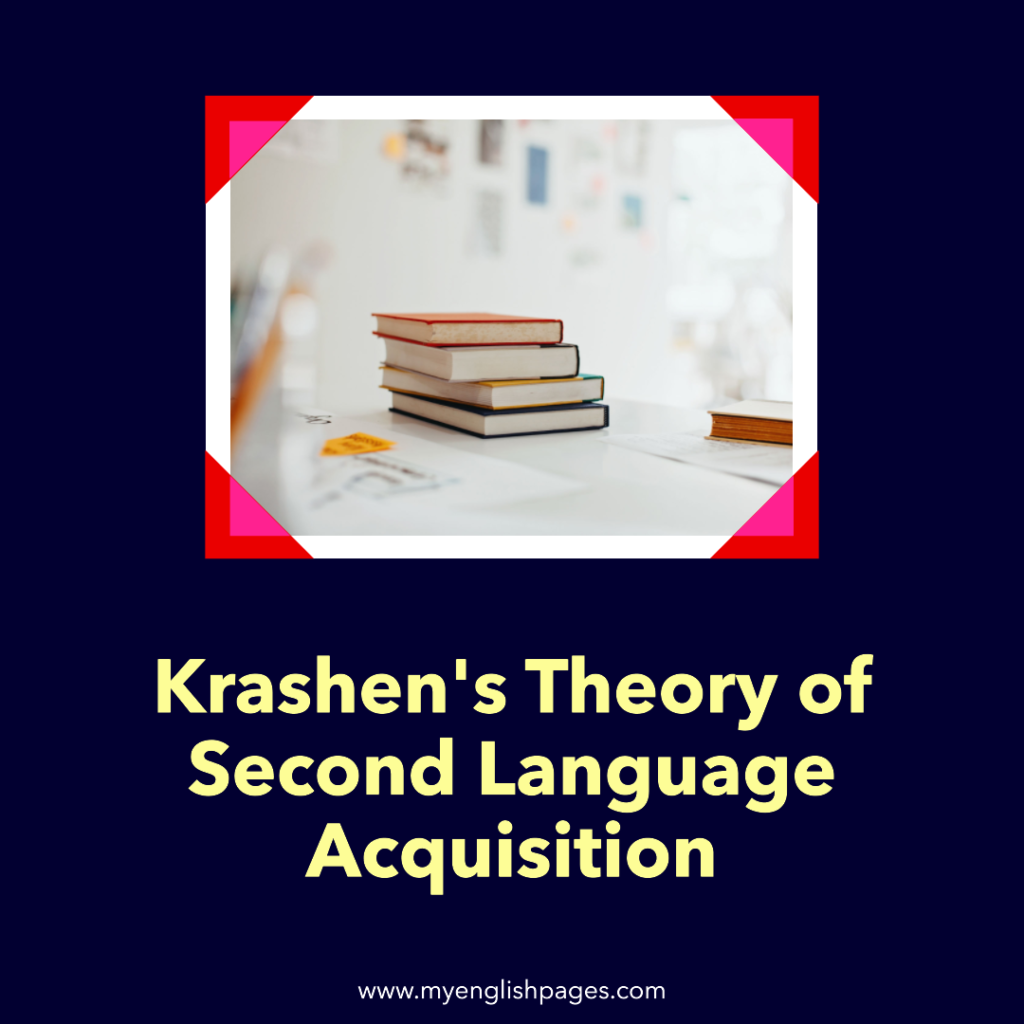

Unraveling the Power of Krashen’s Theory: Exploring Second Language Acquisition

Table of Contents
Introduction.
Learning a second language is a complex process that has fascinated linguists and educators for decades. One influential theory in the field of second language acquisition is Krashen’s Theory, proposed by Stephen Krashen, an eminent linguist, and researcher.
This theory suggests that language acquisition is a subconscious process, and individuals acquire language skills through exposure to comprehensible input . In this article, we will delve into the details of Krashen’s Theory of Second Language Acquisition, exploring its key hypotheses, applications, and criticisms.
Background of Krashen’s Theory of Second Language Acquisition
Stephen Krashen developed his theory of second language acquisition in the 1970s and 1980s, drawing upon various linguistic and psychological perspectives. His theory gained significant recognition and influenced language teaching methodologies worldwide.
Krashen emphasized the importance of natural language acquisition, suggesting that formal instruction should take a backseat to meaningful exposure to the target language.
His theory has later been criticized for being vague and imprecise.

Five Hypotheses of Krashen’s Theory
Krashen’s Theory is composed of five key hypotheses, each providing insights into different aspects of second language acquisition. Let’s explore them:
1. Input Hypothesis
The Input Hypothesis suggests that language learners progress when they receive comprehensible input, i.e., language that is slightly beyond their current proficiency level. This is often referred to as i+1, meaning ‘ input ‘ which is one step beyond learners’ current stage of linguistic competence.
In addition to being slightly above learners’ level of understanding, this input should be engaging, meaningful, and related to the learner’s interests and needs.
According to Krashen’s claim, this comprehensible input facilitates subconscious language acquisition.
2. Acquisition-Learning Hypothesis
Krashen differentiates between language acquisition and language learning . Acquisition refers to the subconscious assimilation of language skills through exposure and understanding, while learning involves conscious knowledge of rules and grammatical structures. He argues that acquisition is more effective than learning in developing fluent and natural language skills.
3. Monitor Hypothesis
The Monitor Hypothesis states that language learners utilize their acquired knowledge to self-monitor their production . When learners have time to reflect and consciously apply their knowledge, they can correct errors and improve their language proficiency. However, Krashen suggests that overreliance on the monitor can hinder spontaneous and fluent communication.
4. Natural Order Hypothesis
The Natural Order Hypothesis proposes that language learners acquire grammatical structures in a predictable sequence. Krashen argues that learners naturally progress through specific linguistic structures, regardless of explicit instruction or correction. This hypothesis emphasizes the importance of providing learners with ample exposure to the target language.

5. Affective Filter Hypothesis
Krashen’s Affective Filter Hypothesis suggests that affective factors, such as motivation, self-confidence, and anxiety, play a crucial role in language acquisition. When learners are highly motivated, have low anxiety, and feel comfortable in their learning environment, their affective filter is low, facilitating language acquisition. On the other hand, a high affective filter can impede language acquisition.
Application of Krashen’s Theory
Krashen’s Theory has had a significant impact on language teaching methodologies. It has influenced language teaching approaches such as the natural approach , the communicative approach , and the input-based methods.
These approaches prioritize providing learners with meaningful and comprehensible input, creating a language-rich environment, and encouraging natural language acquisition. Teachers can design activities that promote exposure to authentic language materials, encourage communication, and create a supportive and low-anxiety classroom atmosphere.
Furthermore, Krashen’s Theory highlights the importance of extensive reading in language acquisition. Reading allows learners to encounter a wide range of vocabulary, grammatical structures, and language patterns. By engaging with various texts, learners can develop their language skills organically and expand their knowledge of the language.
Criticisms of Krashen’s Theory
While Krashen’s Theory of second language acquisition has been widely influential, it has also faced some criticisms.
1. Comprehensible input Hypothesis : One criticism is that the theory does not fully account for the role of explicit instruction and practice in language learning. Some argue that a combination of both acquisition and learning strategies can lead to more comprehensive language development.
2. Acquisition-learning Hypothesis : Krashen’s framework distinguishes between acquisition and learning, with acquisition being slow and subtle, and learning being fast and conscious.
- This strict dichotomy has been criticized by linguists for its fuzzy terminology.
- According to Krashen, language acquisition is the desired process for language learners, leading to fluency, while learning only serves as a monitor or editor. The assumed claim here is that learning does not transform into acquisition, which is challenged by the idea that acquisition can be enriched by the learned system.
- Instead of drawing a clear boundary between acquisition and learning, it is suggested that the interplay and connections between the two processes should be recognized and explained.
3. Monitor Hypothesis: The main criticism of the monitor hypothesis is grounded on the evaluation of the acquisition-learning hypothesis.
- The monitor hypothesis suggests that the main purpose of language learning is to serve as a monitor for language output produced by the acquired system. However, critics of Krashen’s theory argue that it is impossible to clearly and adequately separate language learning from language acquisition, making it challenging to prove that the learned system functions solely as a monitor.
- Furthermore, the claim that learning-as-monitor only applies to output after production is questioned. Second-language learners can use the learned system both for producing output and facilitating comprehension.
4. Natural Order Hypothesis: Another criticism pertains to the natural order hypothesis.
- While there is evidence supporting the idea of a natural order of grammatical acquisition, some researchers argue that learners may benefit from explicit instruction and guidance in certain cases, particularly with more complex grammatical structures.
- Krashen’s claim that children acquiring English as a second language follow a predictable sequence in acquiring morphemes is supported by studies comparing them to children acquiring English as a first language, but this claim may not hold true for second language acquisition as a whole.
- Morpheme studies, while providing evidence for the natural order hypothesis, do not offer insights into the acquisition of other linguistic features such as phonology, syntax, semantics, and pragmatics. The predictable sequence is limited to morpheme acquisition.
- The influence of the first language on second language acquisition is not adequately addressed by the natural order hypothesis. Research suggests that second language learners acquire grammatical structures in different orders depending on their native language, contradicting the notion of a universal and predictable sequence.
5. Affective Filter Hypothesis : Some educators argue that the affective filter hypothesis oversimplifies the role of affective factors in language acquisition.
- The affective filter hypothesis in Krashen’s Monitor Model claims that individual variation in second language acquisition is primarily influenced by affective factors, which is an oversimplification of how people acquire a second language. Motivation and affective factors can vary greatly among learners, and the impact of these factors on language acquisition is multifaceted and complex.
- Criticism of this hypothesis questions the assertion that affective factors alone can explain differences in language learning.
- Children, despite lacking the affective filter described by Krashen, still experience variations in motivation, self-confidence, and anxiety, which also impact their second language learning.
- The claim that an affective filter prevents comprehensible input from reaching the language acquisition device is challenged by evidence of adult second language learners who achieve native-like competence except for specific grammatical features.
- The affective filter hypothesis does not address the fundamental question of how the filter determines which parts of language to include or exclude, further challenging its explanatory power for individual variation in second language acquisition.
Implications of Krashen’s Theory of Second Language Acquisition
Although Krashen’s theory has been widely criticized and re-evaluated, there are still some valid implications for language teaching:
- Understanding Krashen’s Theory of Second Language Acquisition has important implications for language educators and learners. It emphasizes the need for providing meaningful and engaging input in language classrooms.
- Teachers should create an environment that encourages communication, promotes extensive reading, and addresses learners’ affective needs.
- Furthermore, Krashen’s Theory suggests that language acquisition is a gradual and subconscious process that requires time and exposure.
- It highlights the importance of creating a language-rich environment both inside and outside the classroom.
- Learners can benefit from various language resources such as authentic materials, multimedia resources, and language exchange opportunities to enhance their language acquisition journey.
In conclusion, Krashen’s Theory of Second Language Acquisition provides valuable insights into the process of language learning. Its five hypotheses shed light on the importance of comprehensible input, the distinction between acquisition and learning, the role of self-monitoring, the natural order of grammatical acquisition, and the influence of affective factors. While the theory has faced criticisms, it has significantly influenced language teaching methodologies and continues to shape our understanding of second language acquisition.
What are the five hypotheses of Krashen’s theory of second language acquisition?
The five hypotheses of Krashen’s theory are the Input Hypothesis, the Monitor Hypothesis, the Natural Order Hypothesis, the Affective Filter Hypothesis, and the Output Hypothesis.
What is an example of Krashen’s theory?
An example of implementing Krashen’s theory in the classroom is creating a language-rich environment where students are exposed to meaningful and comprehensible input through engaging activities, authentic materials, and opportunities for meaningful communication. This approach encourages natural language acquisition by providing students with ample opportunities to interact with the language in a low-anxiety environment.
How does Stephen Krashen describe language acquisition vs. language learning?
Stephen Krashen describes language acquisition as a subconscious process that occurs naturally through exposure to meaningful language, while language learning involves a conscious study and rule-based instruction.
What does Krashen’s theory of second Language acquisition say about explicit vs. implicit language teaching?
Krashen’s theory of second language acquisition emphasizes the importance of implicit language teaching over explicit instruction. According to Krashen, language acquisition occurs naturally when learners are exposed to meaningful and comprehensible input, rather than through explicit teaching of grammar rules. He believes that explicit instruction should be kept to a minimum and primarily used as a monitor or editor in the language production stage. The focus is on creating an immersive language environment that promotes language acquisition through exposure and meaningful communication, allowing learners to develop their language skills implicitly.
What criticism is addressed to Krashen’s ideas about implicit language learning?
While Krashen’s theory prioritizes natural language acquisition through comprehensible input and unconscious acquisition of the target language, it is important to note that the inclusion of explicit instruction can be beneficial in certain contexts, as it provides learners with explicit knowledge that complements their implicit language skills. Thus, a combination of implicit and explicit teaching methods tailored to learners’ needs and proficiency levels can enhance language acquisition and proficiency.
